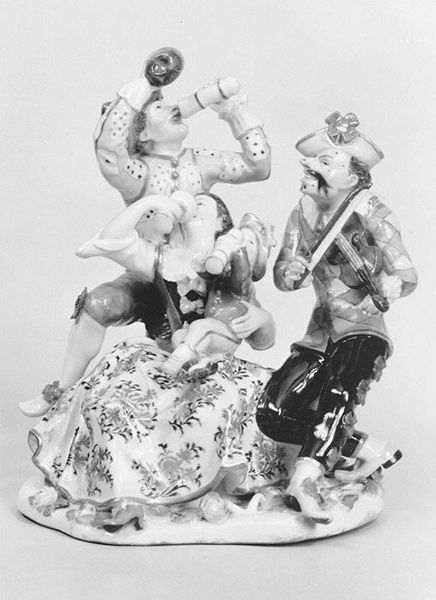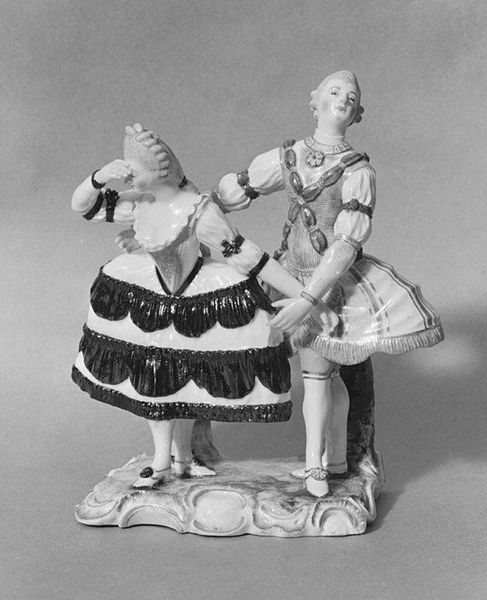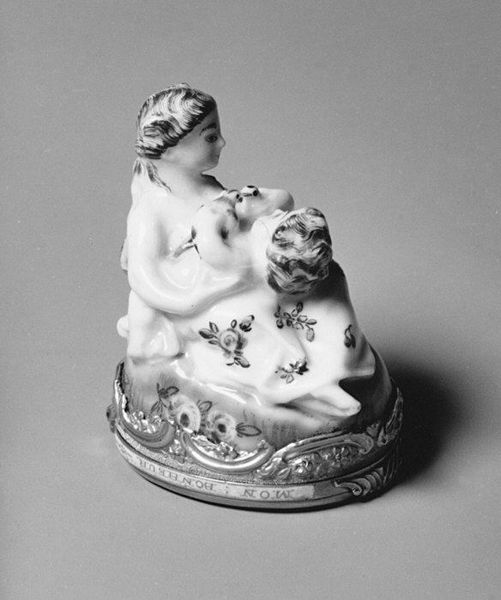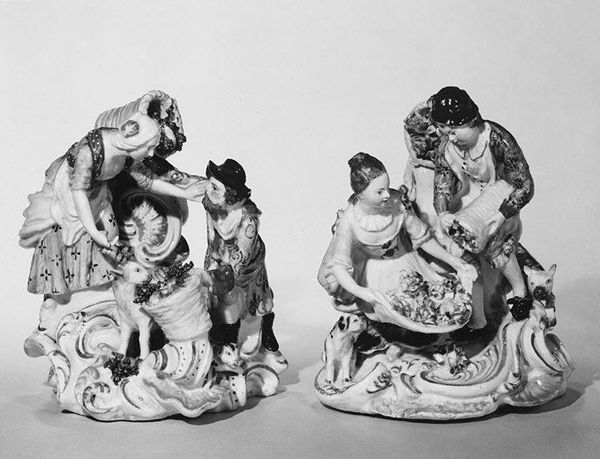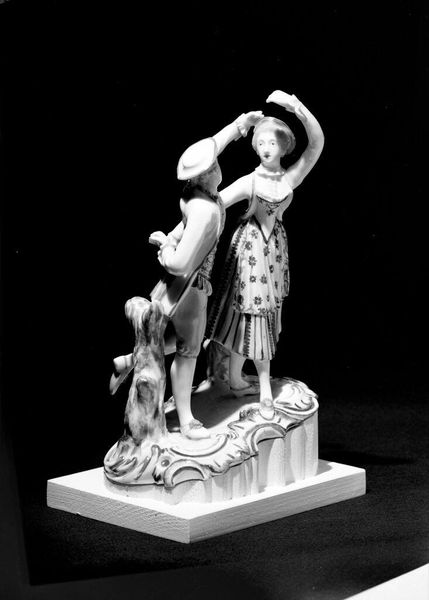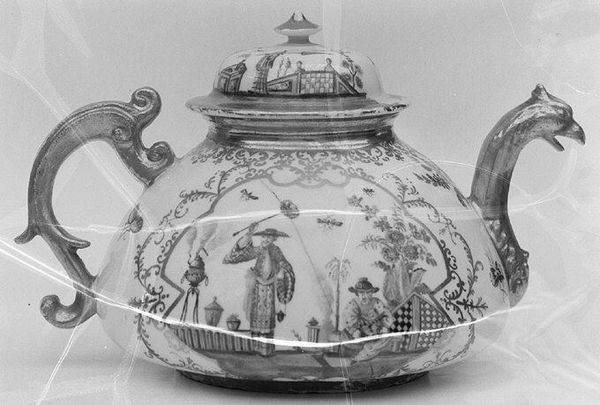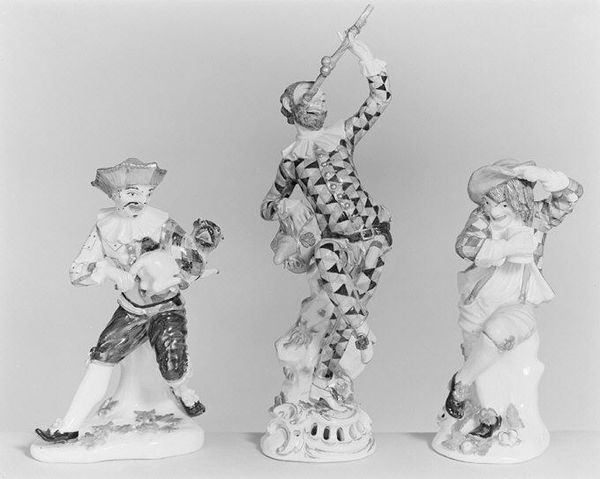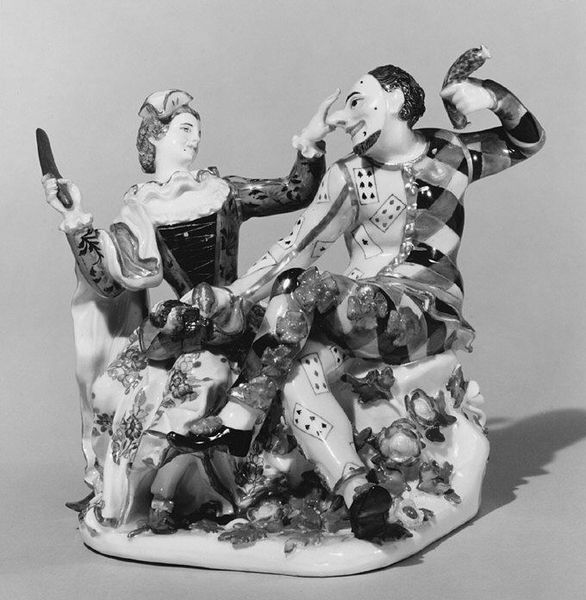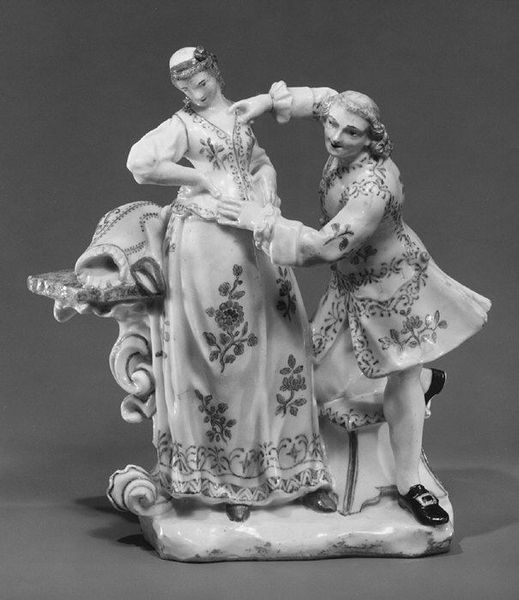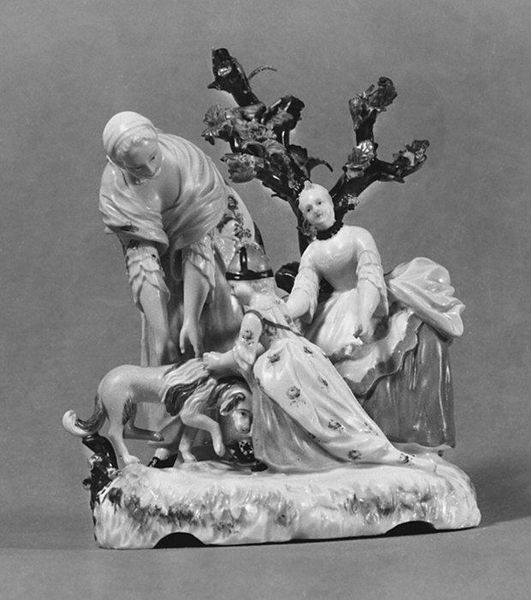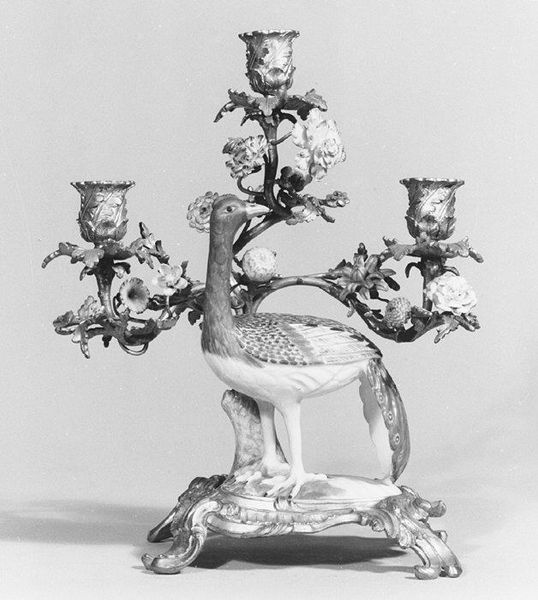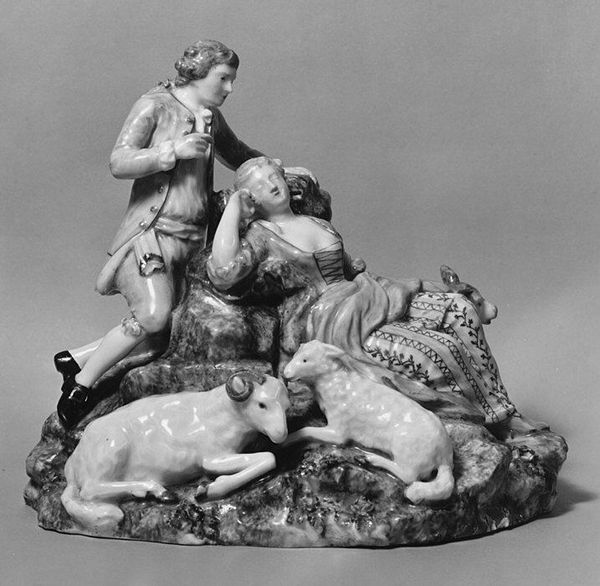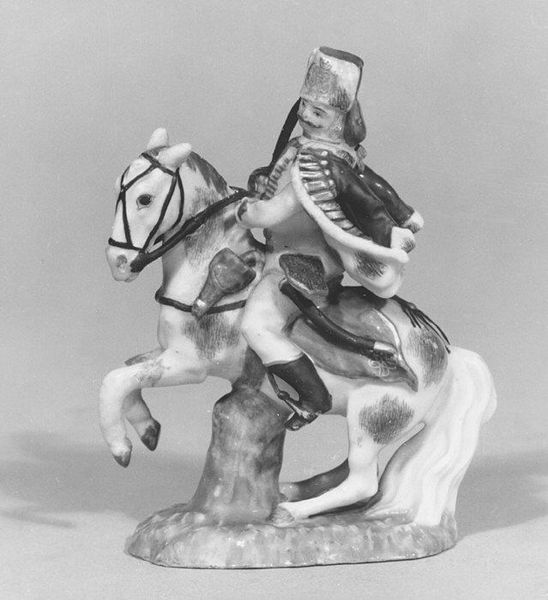
Marital discord (one of a pair) 1761 - 1771
0:00
0:00
ceramic, porcelain, sculpture
#
sculpture
#
ceramic
#
porcelain
#
figuration
#
sculpture
#
men
#
genre-painting
#
decorative-art
#
rococo
Dimensions: Height: 7 3/4 in. (19.7 cm)
Copyright: Public Domain
Editor: Here we have "Marital discord (one of a pair)," a porcelain sculpture crafted between 1761 and 1771 by the Frankenthal Porcelain Manufactory. The scene is quite… dynamic! There’s a woman seemingly about to strike a man with what looks like a spoon. What do you make of it? Curator: It's a fascinating snapshot of 18th-century social anxieties rendered in a delicate material. Beyond the immediate narrative, think about the role of porcelain in that era. Editor: It seems to be making a scene in somebody’s parlor! Curator: Precisely. Porcelain figures weren't merely decorative; they were often vehicles for social commentary, aimed at a rising bourgeois class. A critique on the behaviour of elite? Editor: Oh, I see! Like a cautionary tale against the pitfalls of domestic life presented to a specific audience. Are we meant to sympathize with one figure or the other? Curator: That's where the politics of imagery come in. The woman's aggression challenges conventional notions of femininity. How does the artist invite or reject potential sympathy, do you think? Is it gendered? Is the humor softening a deeper social commentary? These objects were incredibly public, designed to provoke conversations around morals, manners, and social roles. Editor: I hadn’t considered how deliberately these figures were designed to be conversation starters. Looking closer, the rococo details actually seem to heighten the sense of satire. I will see porcelain differently now. Curator: Exactly! It’s a reminder that art, even in its most seemingly innocuous forms, always exists within a specific social and historical framework, participating in a wider cultural dialogue.
Comments
No comments
Be the first to comment and join the conversation on the ultimate creative platform.
